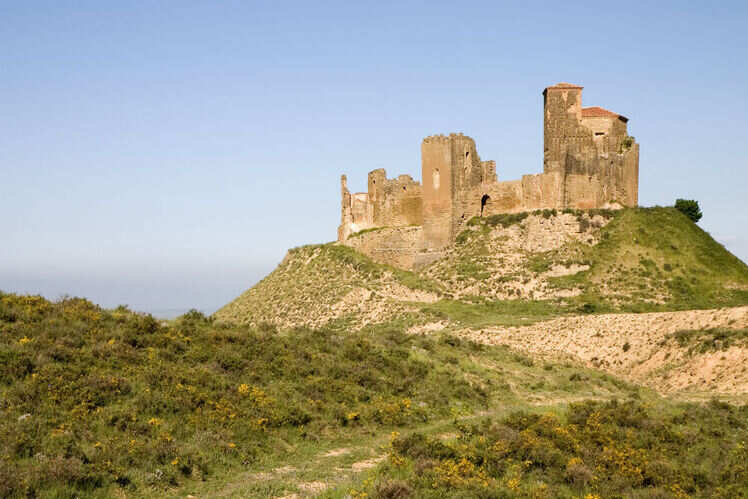
Next to the river Esla, in the uninhabited village of Castrotorafe, Zamora, the castle must have been built before 1319, according to the will of Juan de Castilla. The castle of Castrotorafe with the river Esla as witness. Access to the enclave is easy via the motorway between Maqueda and Toledo. In the meantime, the fortress is witness to curious onlookers and tourists who, camera in hand, take beautiful pictures of the area and the castle. Today it is privately owned and there are no known actions related to the preservation or refurbishment of the building. Thus, there are few expectations for the dilapidated castle. However, the project, which was intended to use the proceeds from the sale of the drink to refurbish the castle, failed. For example, in 2018, a distillery used the name Castillo de Caudilla as a lure to produce a whiskey. Some popular initiatives have tried unsuccessfully to refurbish the building. Its few remains suffered a further setback when, in 1999, the main façade collapsed. It is in a very poor state of preservation like other ruined castles. It withstood the attacks suffered by the army of Henry IV due to the rivalry he had with his brother Alfonso for the kingdom of Castile. This castle, which is more pictorial and stately than military in appearance, served as the residence of Fernando de Rivadeneyra. In the north of the province of Toledo, this 15th century fortress stands on the outskirts of the now uninhabited village of Caudilla. Rivadeneyra Castle is perhaps one of the best known and most representative of the region. For several years, it has been included on the red list drawn up by Hispania Nostra among other ruined castles. Currently, one of the towers of the castle has significant cracks causing part of the wall to collapse in 2018. For several years, the Vozmediano Town Council, as owner, has been requesting its restoration, but has received no response. Since then, the cemetery it houses has been gaining ground on the fortification causing the progressive deterioration of the medieval building. However, the inhabitants of the village rejected the proposal, thus signing the death sentence of the castle itself. In order to carry out such an action, the village of Vozmediano had to be incorporated to Ágreda, a nearby locality. In the 1960s, the then Minister of Tourism, Manuel Fraga, proposed the creation of a Parador Nacional using the fortress in Soria. Inside the castle itself, between defences, the 15th century writer wrote some of his most famous serranillas.ĭuring the 20th century, the castle of Vozmediano was more in the news than during the Middle Ages. A protagonist of the conquest of Alfonso I of Aragón, in 1429 the poet and soldier Iñigo López de Mendoza, Marquis of Santillana, arrived here. Halfway between Castile and Aragón, the castle of Vozmediano stands on large crags and overlooks the town to which it gives its name, in Soria. The castle of Vozmediano could have been a Parador Nacional. For their part, the local authorities have warned of the risk of entering the 13th century fortress. In addition, the deterioration and the aforementioned danger of collapse have meant that the area around the fortress has been fenced off to avoid problems. Perched on a hill in the middle of the Rioja vineyards, it offers beautiful views of the Rioja Alta.

The castle of Davalillo is one of the most iconic images of the region. It is privately owned and cannot be visited for the moment. It is at high risk of collapse due to the fact that the bases of the towers are very uneven. Perhaps the lack of private investment has led to the complex being neglected in a way that is unworthy of a historic monument.

Just over a year ago, the CVNE (Wine Company of Northern Spain) acquired it after taking it from the local and autonomous administrations after buying it from another important wine company in the area. It is not mentioned by Sancho VII in the list of castles in the area that he made at the request of the English Parliament.īe that as it may, Davalillo Castle is one of the ruined castles in a serious state of neglect. What seems certain is that it was built after 1177. Although the date of its construction is not well known it seems that Davalillo Castle originated between the end of the 12th century and the beginning of the 13th century. The Castle of Davalillo, near the town of San Asensio, in La Rioja, had its moments of glory in the numerous battles between the Navarrese and Riojan armies.

The Rioja vineyard at the foot of Davalillo Castle.


 0 kommentar(er)
0 kommentar(er)
